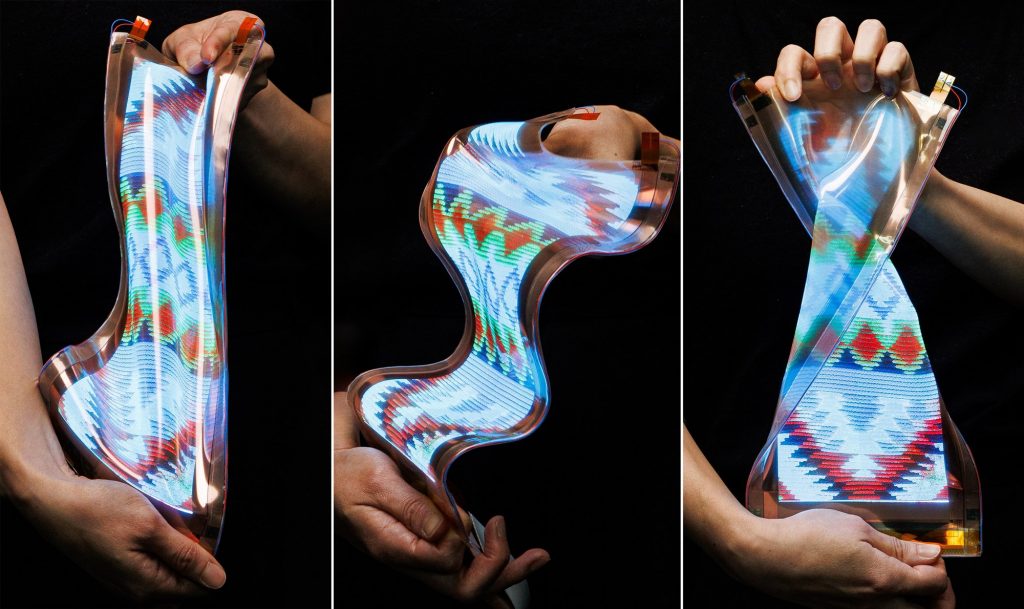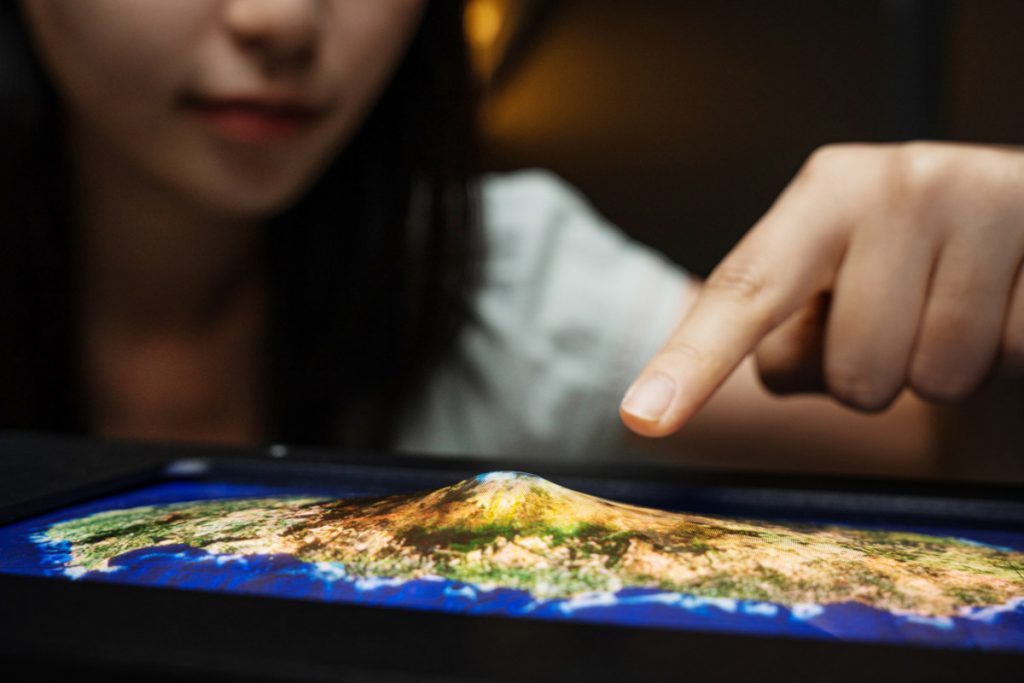Recently, LG Display, a subsidiary of South Korea’s LG, announced the launch of the world’s first stretchable Micro LED display that can stretch up to 50%. LG Display publicly demonstrated the prototype of its stretchable flexible LED screen for the first time at the “Flexible Screen Development National Policy Project Final Results Exchange Meeting” held at the LG Science Park in Magok, Seoul on November, 8th.

LG Display demonstrated its new 12 inch stretchable micro LED display
The newly demonstrated LG’s stretchable Micro LED screen is a 12-inch transparent and flexible RGB full-color LED screen made of 40-micron Micro LEDs, with a resolution of 100ppi, and can be instantly stretched to 18 inches. It is the world’s first flexible transparent LED screen that can stretch up to 50%.
In fact, as early as 2022, LG Display launched its first stretchable micro LED display, which was also a 12-inch 100 PPI high-resolution display screen made of 40-micron LED chips, but the screen can only stretch up 20% at that time, which had great limit in actual application.
Since then, in order to achieve higher stretchability on this screen, LG Display has incorporated manufacturing and design processes including improved special silicon substrate materials (similar to the materials used to make contact lenses) and developed new wiring structures, and successfully increased the stretch rate of this type of Micro LED flexible screen to 50%.
In addition, durability tests have shown that LG Display’s newly developed 50% stretchable Micro LED screen can withstand more than 10,000 times stretching, and still maintain high-quality images even when exposed to extreme environments such as low or high temperatures and external impacts.
LG Display also said that although this latest version of stretchable Micro LED display can stretch up to 50%, opening up a wider range of application scenarios for such displays, it is still difficult to achieve commercial application at present.
Samsung, as a giant in the LED display industry, has also developed a stretchable Micro LED display.
At the 24th International Meeting on Information Display (iMID 2024) held on Jeju Island, South Korea, Samsung also demonstrated a number of its LED display products, including a stretchable Micro LED display.
This is the first time that Samsung has publicly showed its stretchable Micro LED display. Unfortunately, Samsung did not introduce the display in detail. At present, we only know that the display has a PPI of120 and can stretch up to 125% of its original size, that is, the stretching rate is only 25%.

Samsung stretchable micro LED display
So, as two well-known companies in the LED display industry, why do LG and Samsung both focus on the development of stretchable Micro LED displays?
Stretchable displays have always been a representative product of cutting-edge display technology. Focusing on the development of stretchable Micro LED screens can well promote technological innovation and demonstrate the technical strength of enterprises, thereby gaining better market recognition.
In addition, the development of stretchable Micro LED display technology can further develop new application scenarios for Micro LED. From previous reports and demonstration videos, stretchable Micro LED screens are mainly used in some very unique scenarios, such as flexible LED screens that fit soft skin touch clothing, and simulated stretchable touch screen control buttons in cars.
As a leading enterprise in LED packaging across China, Kinglight has developed a number of high-quality Micro LEDs, including MC0404, MC0505, MC0606 and MC1010, which are suitable for making HD LED displays with different pixel pitches.
Kinglight’s Micro LEDs are based on advanced MiP (abbreviation for micro LED in package) technology, which adopts a flip-chip structure, that is, the electrodes of the R, G, and B LED chips are directly connected to the PCB without wire bonding (usually using copper wires or gold wires).

Kinglight provides various mini and micro LEDs
Flip chip structure does not only provide excellent luminous efficiency, but also allows efficient heat dissipation. This means reduced screen temperature during long time operation, which is beneficial for micro pixel pitch LED displays with dense pixels, thereby ensuring the stability and safety of the screen.